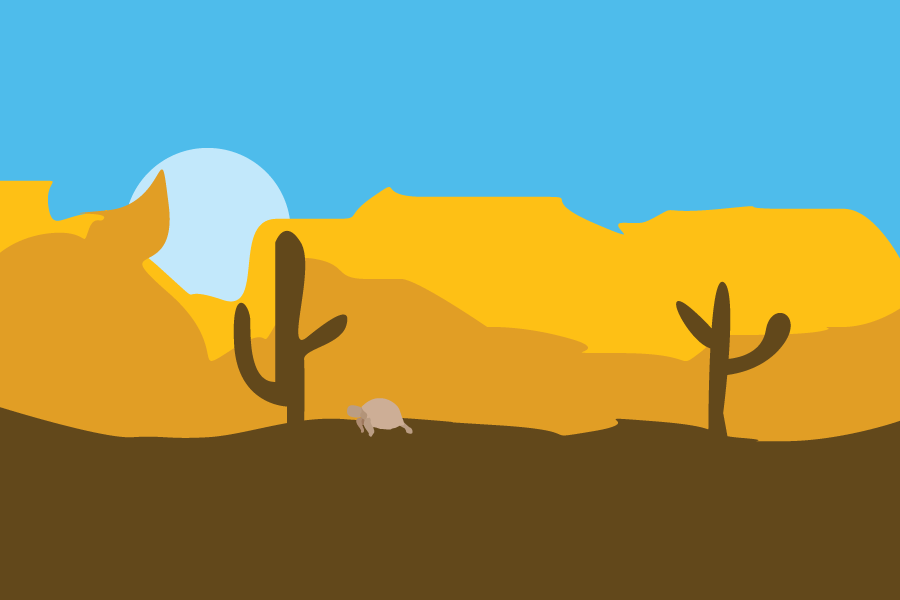
Design of wind energy facilities impacts predators, prey
Although habitat disturbance is hardly ever viewed as favorable for wildlife, the presence of wind turbines can lead to unique opportunities and advantages for some species, such as desert tortoises. According to a recent study published in The Journal of Wildlife Management led by researchers at the University of California, Davis and the U.S. Geological Survey (USGS), the design of wind energy facilities creates special patterns of behavior in both predators and prey.
Scientists surrounded the entrances of 46 active desert tortoise burrows with motion-activated cameras in a wind energy facility near Palm Springs, Calif. The results from the video recordings show that visits to burrows by predators such as bobcats, gray foxes, coyotes, black bears and western spotted skunks decreased in proximity to wind turbines and increased closer to dirt roads.
“These results suggest that infrastructure associated with large-scale wind energy facilities, such as dirt roads, may act as movement corridors for terrestrial wildlife,” said Mickey Agha, the study’s lead author and a UC Davis graduate student in ecology. “Alternatively, lack of mesocarnivore sightings closer to wind turbines could suggest avoidance by terrestrial animals.”
Dr. Jeffrey Lovich, USGS scientist and a co-author of the study, added that the sound and vibrations from wind turbines may cause the mammals to avoid areas closer to turbines.
Wind energy facilities can fragment habitats and thereby diminish populations of large carnivores, but small carnivores such as foxes and coyotes are often able to adapt to the modified environment.
Additionally, the discovery that dirts roads can lead to species success in desert tortoises is beneficial to consider when designing the layout of wind energy facilities.
“Minimizing the amount and extent of roads that are built to service wind turbines may benefit desert tortoises by eliminating a popular corridor for predators,” said Dr. Brian Todd, the study’s other co-author and a UC Davis professor of ecology.
This study shows the immense impact that the infrastructure of wind energy facilities can have on wildlife behavior.
By understanding wildlife’s response to changes in the wind energy landscape through studies like this one, scientists hope to implement better designs for wind energy facilities while also considering the effects of human actions on species occupying a given habitat.
Written by: Harnoor Gill — science@theaggie.org



